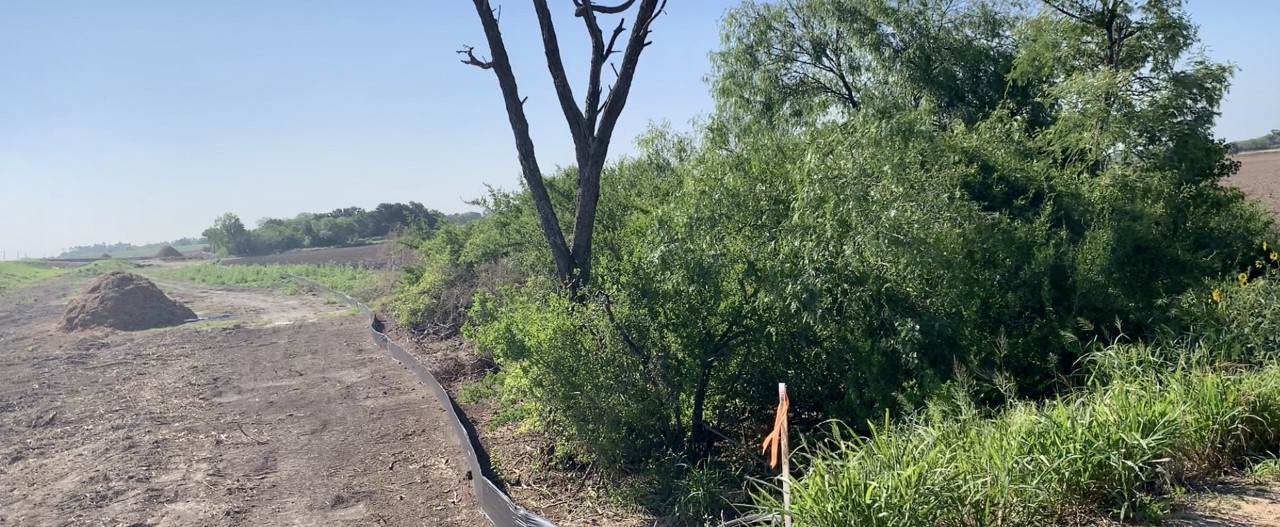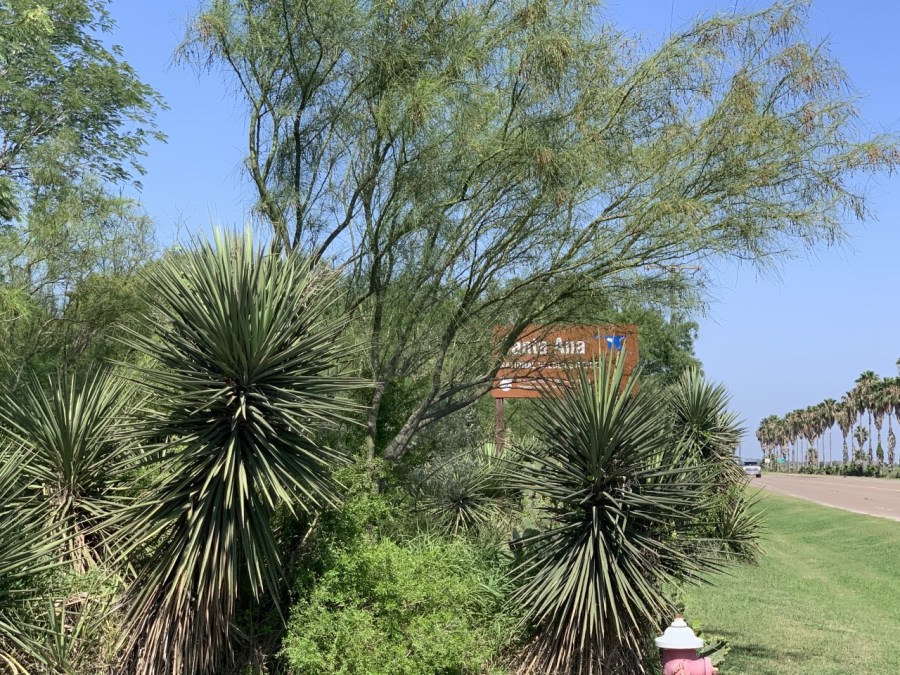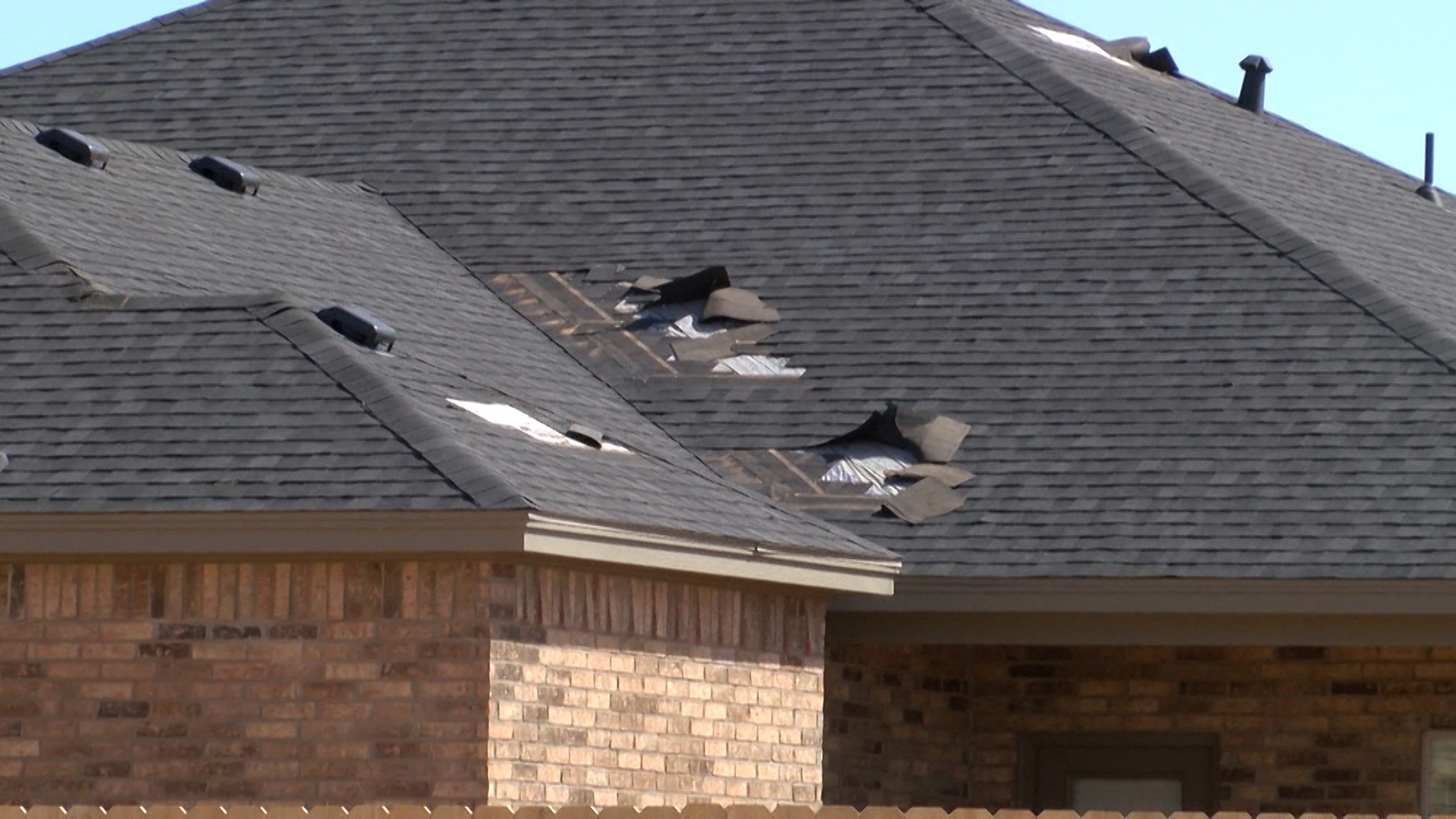ALAMO, Texas (Border Report) — A federal judge has ruled that border wall surveyors may enter a disputed swath of land that abuts a corner of the Santa Ana National Wildlife Refuge, which Congress has previously exempted from border wall construction.
Wooden stakes with ribbons on Monday morning were seen marking an area so close to this federally protected wildlife refuge in deep South Texas that environmentalists say will be destroyed if U.S. Customs and Border Protection and Army Corps of Engineers build a border wall infrastructure system.

U.S. District Judge Randy Crane, of the Southern District of Texas in McAllen, on April 30 ruled that surveyors may access this section of land, writing that he grants “the right of the United States, its agents, contractors, and assigns to enter in, on, over and across the land” for up to 12 months.
The one-third-mile-long section of land has been in dispute because when the wildlife refuge bought it from a neighboring farmer in 1978, it did not buy the section of land under a dirt levee. Environmentalists had maintained the land was part of the wildlife refuge, but Crane ruled it is “located immediately adjacent to the Refuge.” Therefore it is not subject to the carve-out by Congress.
This angers environmentalists like Jim Chapman, who is president of the Friends of the Wildlife Corridor, a nonprofit support group for Santa Ana National Wildlife Refuge and Lower Rio Grande Valley National Wildlife Refuge. The 72-year-old retired physician’s assistant walked the section on Monday morning pointing out wooden stakes already put up in the area, and he pointed out a noticeably thinned treeline where the border wall is slated to go adjacent to the refuge.

Chapman’s concern is that if agents build an 18-foot-tall metal border wall on this levee, then an accompanying 150-foot-wide enforcement zone will encroach on refuge lands.
“If they put a border wall here they are technically not putting it on Santa Ana,” Chapman said. “Congress exempted it from a border wall two years ago and the language said a wall would not be put in Santa Ana. The intent clearly by Congress was there would not be a wall in Santa Ana.”
Known as the “jewel of the National Wildlife Refuge System,” this wildlife refuge sits at the crossroads of two major east-west and north-south migratory bird routes and is home to threatened species of tortoise and other animals. The 2,088 acres park was established in 1943 and is one of the most popular eco-tourism sites in the Rio Grande Valley drawing in birders from all over the world.
Chapman said there are many species of animals that will be unable to get over a border wall and would be cut off from getting water from the Rio Grande and their natural habitat. He also worries that noise construction will disrupt the tranquil park, which is
A few years ago, when President Donald Trump promised to build a border wall through South Texas, thousands of people protested and marched and rallied to protect this park. Congress voted to appropriate millions of dollars for border wall construction but specifically has exempted Santa Ana, along with historic La Lomita Chapel, the National Butterfly Center and Bentsen-Rio Grande Valley State Park.
“It’s very clear that Homeland Security is using a technicality and ignoring the intent of Congress and using this technicality to build a wall,” Chapman said.

The park has been closed due to the coronavirus pandemic, but that hasn’t stopped the U.S. Department of Homeland Security for pushing ahead with border wall plans. In fact
The Texas Civil Rights Project, a nonprofit organization that has offices just a few miles from Santa Ana, has been offering pro bono legal aid to property owners throughout South Texas to help them fight entry onto their property by surveyors for the border wall.
“The Santa Ana National Wildlife Refuge is one of the largest protected areas in the Rio Grande Valley, it’s the crown jewel,” Garza said. “These areas were protected by statutes specifically by Congress that state construction cannot take place at Santa Ana. Unfortunately, what we’re seeing in recent months is that the government decided to follow up to the letter of the law by using
“The government may say it is still being built on private property, but in order to have a 150-ft enforcement zone and lighting and if they were to continue it would extend into Santa Ana,” Garza said.
Visit BorderReport.com for the latest exclusive stories and breaking news about issues along the United States-Mexico border.
















